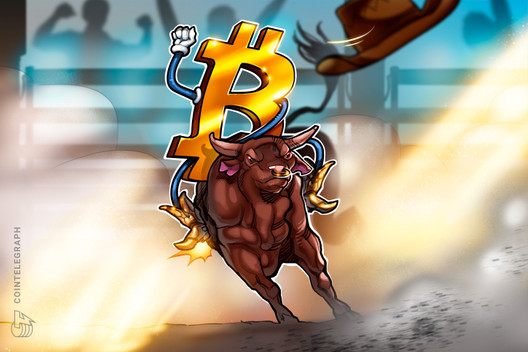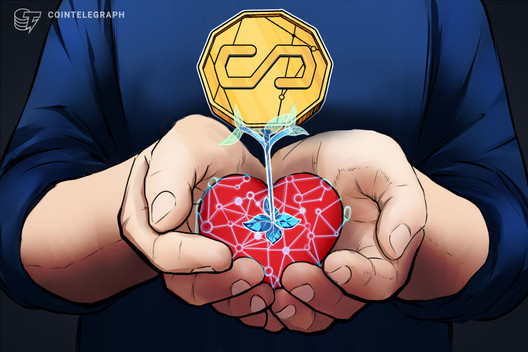
Tokenization might be the best way for businesses to adjust to the new reality of the global coronavirus pandemic.
One of the most curious and subtle developments of the COVID-19 global pandemic is the surging demand for stablecoins. Their total supply hit an all-time high recently — roughly $7.5 billion — with demand for Tether (USDT) and USD Coin (USDC) soaring.
The development implicitly foreshadows financial disruption as desperate emerging market governments, foreign financial institutions and international businesses compete for a global shortage of dollars. The general consensus for the term of the development is called crypto or digital version of dollarization, and it represents a new take on the dollarization mechanics that have taken place across countries like Argentina and Ecuador before.
Unironically, the International Monetary Fund was apparently aware of the potential of such a development back in 2017, detailed by Christine Lagarde. The only defensive posture that governments can take against crypto-dollarization, especially in emerging markets, is an effective and responsible monetary policy.
But when the Federal Reserve is throwing the kitchen sink, worth trillions, at the economic fallout of COVID-19, don’t expect other countries to be more prudent in their monetary maneuvers. A looming solvency crisis, stoked by swelling global debt that is denominated in United States dollars, will cause geopolitical fractures in many regions.
Companies will likely lean on crypto-dollars, like stablecoins, for enhanced liquidity and access to the USD during the “dash for cash.” And governments may depart the USD reserve hegemony entirely with digital currencies.
Stablecoins — The crypto-dollars the world wants
Stablecoins operate with many of the same characteristics as eurodollars but retain the bearer-instrument quality of cash and the rapid, global settlement execution of cryptocurrencies. Additionally, they are often backed by one to one cash or T-Bill reserves, which makes them more appealing options for entities — like a global supply chain business — with better assurances that their dollars are not subject to the whims of fractional-reserve systems.
In the context of empowering citizens as well as companies, stablecoins are an ideal medium to bypass capital controls by obtaining a foreign currency analog (crypto-dollars) without going through the banking system.
Stablecoins are widely more accessible than eurodollars for most foreign companies right now. And since they don’t undergo issuance via the credit system, they are basically a more flexible version of the USD that doesn’t have a line of desperate companies and banking institutions lining up to access credit swap lines.
Even gold-backed stablecoins, like the new Tether Gold (XAUT) and Paxos’s PAX Gold (PAXG) versions, have been soaring in demand. What’s evident is that besides the dash for dollars, people have been looking for a stable store of value as a hedge against the volatility of markets right now. This leads to the conclusion behind the potential explosion in tokenization that we’re about to witness: Tokenized money or assets makes them widely more accessible, scalable, transparent and programmable.
Going back to Christine Lagarde’s comments, she identified how accessing virtual currencies is much easier for foreign institutions, businesses and people.
If foreign institutions and businesses and want to dollarize their economy, like what Ecuador has been doing, digital currency is more readily accessible and flexible. For example, a basket of currencies could support a digital currency — e.g., Libra before they bent the knee to regulators — or the monetary policy could be fully transparent, with a programmable contract detailing how the policy adjusts within specific contexts — like a massive decrease in manufacturing output induced by a global pandemic.
It’s hard to imagine that governments would so easily forfeit their right to the monopoly over the creation of money, but they may have no choice.
People will naturally gravitate toward the hardest money. Whether that’s the USD, Bitcoin (BTC), some SDR-backed basket digital currency or China’s incoming digital currency, it appears that tokenized, digital currencies will be the highest in demand.
Crypto-dollars front-run tokenized assets
The widespread adoption of a digital currency or explosive growth in crypto-dollars would likely open the floodgates of tokenization for other assets.
Convex events like the supply/demand shock and the economic fallout of COVID-19 expose many of the faults within existing systems. While regulators and the financial sector have largely ignored these signals for decades, the scale of the problem in the real economy, such as small businesses and global supply chains, may require immediate amelioration.
To enter tokenized assets seems to be the most obvious decision. However, businesses are largely unaware of the advantages of tokenization nor have a notable amount of businesses dipped into the complex world of tokenization. That’s why it will take an exogenous event (like COVID-19) to provoke a large-scale transition to tokenized assets, which is best viewed through the lens of a global supply chain company.
For example, if company A is a private firm based in Singapore and invoices clients in multiple countries via USD, then recent events raise some interesting predicaments. Let’s imagine that company A is a shipping firm carrying commodities around the world’s oceans to various continents.
With supply chains virtually paralyzed right now and crude oil prices plummeting, company A may need to raise capital in USD to meet USD-denominated debt obligations. However, USD swap liquidity outside the U.S. is widely only available to central banks directly connected to the Fed — i.e., mainly G7 countries. Private foreign businesses traditionally accustomed to meeting debt obligations and other liabilities with USD cash flows are in a tough position — rapidly diminishing cash flows with no access to USD.
One of the fastest and most effective ways to solve company A’s dilemma would be to issue tokenized shipping capacity as redeemable assets that can be redeemed with shipping services, then use a third-party smart contract-based protocol to “transform” the redeemable token into tokenized bonds to investors. If company A has a history of good credit and cash flow, then investors would buy up the tokenized bonds via a global market, raising capital in whatever tokenized currency (e.g., crypto-dollars), cryptocurrency or other programmable assets the company desires.
Companies may consider raising money via tokenized bonds outside the confines of stringent regulatory regimes particularly because their desire to raise money in a foreign currency may be at odds with capital controls of the country that their firm is based in. For example, the central bank of Lebanon has recently prohibited firms from acquiring foreign currencies in bulk.
By issuing tokenized bonds, not only would secondary markets be liquid for investors on a global settlement layer but the company could quickly exchange the money raised between digital currencies and assets. Overhead costs, like regulatory expenses and fees going through multiple third-parties during the issuance process, would be vastly reduced, too.
Access to USD, via crypto-dollars, would circumvent any problems through the conventional banking system that company A would typically be faced with during a dollar crunch.
Tokenization cases also extend far beyond the example of company A. The effects of tokenization foster a self-fulfilling prophecy: If more companies, investors and assets rely on digital assets, then the advantages of their interoperability, programmability and accessibility are further augmented.
The COVID-19 chaos has exposed the power of crypto-dollars during a liquidity crunch. With powerful tokenization tools already available, the further growth of crypto-dollars may unleash the full potential of tokenization on the other side of this crisis.
The views, thoughts and opinions expressed here are the author’s alone and do not necessarily reflect or represent the views and opinions of Cointelegraph.
Victor Zhang is the CEO and co-founder of AlphaWallet. He has spent the past five years working to transform the way banking and blockchain technology intersect. Prior to his venture into blockchain technology, Zhang worked for 17 years in international business in Asia and Australia.
from Cointelegraph.com News https://ift.tt/2ySzWSL































